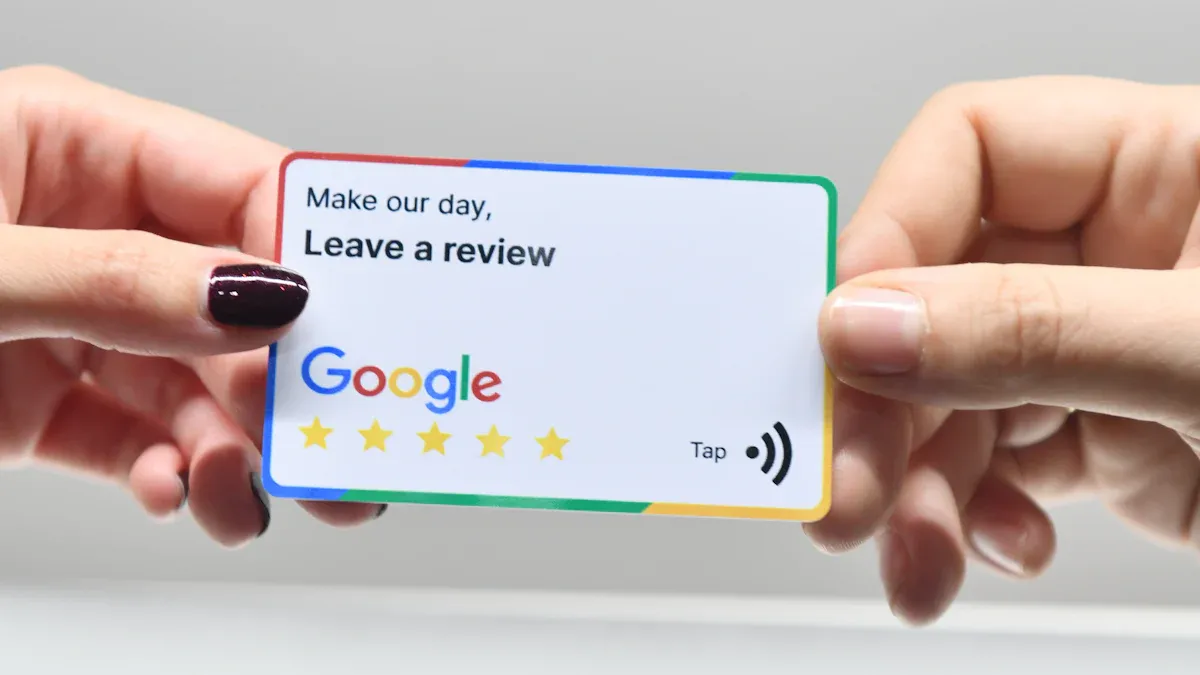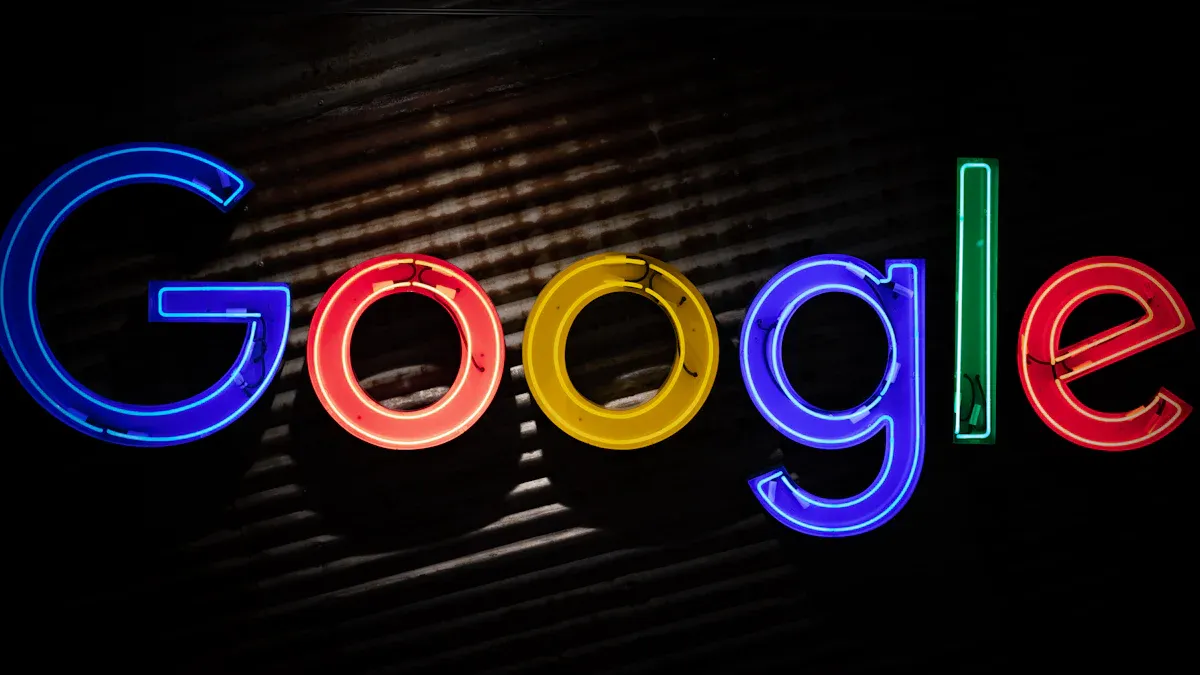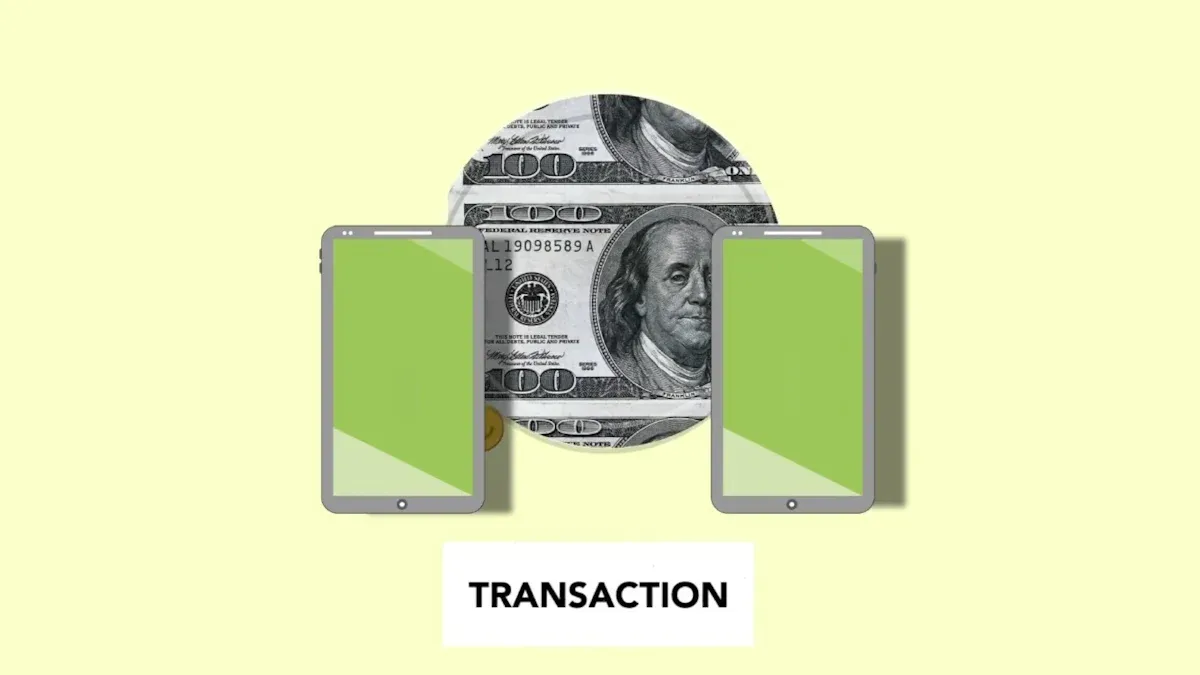- EasyCard
- Trade
- Help
- Announcement
- Academy
- SWIFT Code
- Iban Number
- Referral
- Customer Service
- Blog
- Creator
How to Transfer Google Play Balance to PayPal? Understand the Feasible Transfer Methods and Limitations

Image Source: unsplash
You may be looking for a way to transfer your Google Play balance to PayPal. First, you need to understand a core fact: Google officially does not support directly withdrawing or transferring the balance.
Many people have a misconception. Although you can link a PayPal account in Google Play, this only serves as a payment method and cannot be used to withdraw your Play balance. This article will focus on several feasible indirect methods and analyze their operation processes, cost losses, and potential risks.
Key Points
- Google Play balance cannot be directly transferred to PayPal because Google’s terms of service restrict balance withdrawal and transfer.
- Linking a PayPal account to Google Play is only a payment method and cannot be used to withdraw Google Play balance.
- Selling Google Play gift cards is an indirect transfer method, but it faces discounts and fees, along with scam risks.
- Using specific apps for consumption cash-out and purchasing services for others carry very high risks and are not recommended.
- The safest method is to use Google Play balance for consumption within the Google Play ecosystem, such as purchasing apps, games, or subscription services.
Official Restrictions on Google Play Balance Transfers

Image Source: unsplash
Before attempting any indirect methods, you first need to understand why direct operation is impossible. The answer lies in Google’s strict terms of service and account design. These official restrictions are the fundamental reason preventing you from transferring Google Play balance to PayPal.
Clear Provisions in the Terms of Service
Google Play’s terms of service set clear boundaries for your account balance. These rules are designed to ensure the balance is only used for consumption within its ecosystem. Specifically, you need to note the following:
- Prohibition on Content Resale: You must not sell, rent, transfer, or sublicense any content obtained through Google Play to third parties.
- Promotional Balance Restrictions: If you have promotional balance (for example, obtained through activities), it has no cash value, cannot be redeemed for cash, and cannot be transferred to other users.
These terms directly block the official path to “selling” or “transferring” the balance, as the balance itself and the content purchased with it are restricted to use within your own account.
Restrictions on Account and Fund Usage
The nature of Google Play balance is completely different from the funds in your bank account. It is more like a voucher specific to a platform, not freely disposable cash.
Google clearly states that unless you activate specific Google Pay account features, funds associated with your account do not represent “stored value”. This means you cannot freely access or withdraw these funds like bank deposits.
Your Play balance is designed as a closed fund circulation system. You can use it to purchase apps, games, movies, or books in the Google Play store, but you cannot use it for any transactions outside the ecosystem. This design fundamentally determines that you cannot directly withdraw or transfer it to any external financial account, including PayPal.
Common Misconception: Adding PayPal Does Not Equal Withdrawal
Many users see that Google Play supports adding a PayPal account and naturally think they have found a withdrawal channel. This is a common misunderstanding. You need to understand that the function of adding a PayPal account is to let you “spend money,” not to let you “receive money.”
PayPal as a Payment Method
When you link a PayPal account to Google Play, you are actually authorizing Google to deduct from your PayPal account when you make a purchase. It is exactly the same as other payment methods (such as credit or debit cards).
Think of PayPal as a credit card in your wallet. You can use it to pay bills in a store, but you cannot ask the store to recharge cash from the register to your credit card.
Therefore, this feature provides you with an additional payment option, allowing you to use PayPal balance or linked bank cards to purchase apps and games. It is a one-way fund flow path: from your PayPal to Google Play, not the other way around.
Difference Between Balance and External Funds
To thoroughly understand this issue, you need to distinguish the essential difference between Google Play balance and PayPal funds. Simply put, one is a closed “store credit,” and the other is an open “electronic cash.”
The table below clearly shows their differences:
| Feature | Google Play Balance | PayPal Funds |
|---|---|---|
| Nature | Platform voucher or points | Freely circulating electronic currency |
| Source | Gift cards, promotional activities | Bank transfers, payments from others |
| Usage | Limited to Google Play ecosystem consumption | Online and offline payments, transfers, withdrawals |
| Liquidity | Closed, cannot be transferred out | Open, transferable between different platforms |
This comparison makes it clear to you that your Google Play balance is locked within Google’s ecosystem. It does not have the properties of real currency, so it cannot be freely withdrawn or transferred like PayPal funds.
How to Indirectly Transfer Google Play Balance to PayPal

Image Source: pexels
Since official channels are not feasible, you need to understand some indirect methods. These methods are not officially recommended, and each comes with varying degrees of financial loss and security risks. Before deciding to try, please carefully weigh the pros and cons.
Method 1: Selling Google Play Gift Cards
This is currently the most common and relatively mature indirect method. The basic logic is that you first use your Google Play balance to purchase a new Google Play electronic gift card, then sell this card to someone who needs it, and finally receive payment via PayPal.
Operation Steps
- Purchase Gift Card: In the Google Play app, use your balance to purchase an electronic gift card. You need a valid receiving email to get the card code.
- Choose a Trading Platform: Find a reputable third-party gift card trading platform. These platforms act as intermediaries between buyers and sellers, providing certain security guarantees.
- List and Sell: Publish your gift card information on the platform, set a competitive price, and specify PayPal as the payment method.
- Complete the Transaction: After the buyer pays, provide the card code according to platform rules. After the platform confirms the transaction, it will transfer the funds (after deducting fees) to your account, and you can then withdraw to PayPal.
Common Gift Card Trading Platforms
- Raise: A popular marketplace where you can list gift cards for free and set your own price.
- Gameflip: A market focused on gaming goods that also supports gift card trading; you can receive payments via its wallet or PayPal.
- CardCash: A website where you can sell gift cards directly to the platform; you enter information and receive a quote.
- CoinCola: A P2P platform that allows you to sell gift cards through various methods (including cryptocurrency).
Advantages and Disadvantages
The main advantage of this method is that the process is relatively clear with many platforms to choose from. However, the disadvantages are equally obvious:
- Discount Loss: You almost cannot exchange at a 1:1 ratio. To attract buyers, you usually need to offer a 2% to 15% discount. This means a $100 USD gift card might only sell for $85 to $98 USD.
- Platform Fees: Trading platforms deduct a commission from your sales. Although some platforms (like BuySellVouchers) may have rates as low as 1.2%, the industry average is usually around 5-6%.
- Scam Risk: Digital gift card trading is a high-incidence area for scams. You may encounter buyers using stolen credit cards or scammers who claim the card code is invalid after the transaction. Sophisticated fraudsters may even use bot programs to guess valid gift card numbers. Choosing platforms with escrow services can reduce risk but cannot completely eliminate it.
Method 2: Cashing Out via Specific App Consumption
The idea of this method is to find apps that support Google Play payments and also offer PayPal withdrawal functions. In theory, you can use Google Play balance to purchase virtual items or tokens within such apps, then exchange these assets for cash within the app, and finally withdraw to PayPal.
⚠️ Extremely High Risk: This Method Is Not Recommended
We must strongly warn you that this method has extremely low feasibility and huge risks.
- Compliance in Doubt: This operation walks in the gray area of Google and app developer terms of service, essentially an arbitrage behavior that is easily considered a violation.
- Huge Conversion Loss: The exchange rate between in-app virtual currency and real currency is usually very low, plus withdrawal fees, your funds may lose more than 50%.
- Account Ban Risk: Once abnormal transaction behavior is detected by the system, your Google account and related app accounts may be permanently banned, resulting in total loss of balance.
Due to its huge risks and uncertainty, we do not recommend you try this method to transfer Google Play balance to PayPal.
Method 3: Purchasing Services for Others
If friends, family, or members of your online community (such as webmaster forums like Digital Point) have needs to purchase Google Play apps or in-app purchases, you can act on their behalf.
Operation Method
The operation is very straightforward: the other party tells you what app or service they need to purchase, you use your Google Play balance to buy it for them, and then they transfer the equivalent cash to you via PayPal.
Applicability and Risks
- Highly Dependent on Trust: The cornerstone of this method’s success is trust. It only applies to circles of acquaintances you fully trust. Trading with strangers carries extremely high risk.
- Difficult to Scale: This is an occasional, small-amount transaction method; it is difficult to use it to transfer Google Play balance to PayPal on a large scale.
- Digital Trust Risk: When trading online with unfamiliar people, you directly face the threat of online fraud. The other party may refuse payment after receiving the purchased item or use illegal means to pay, which may lead to serious consequences such as identity theft or financial fraud. Consumer confidence in online transactions is affected by these risks.
In summary, although this method seems direct, it is limited to very small, trustworthy circles and cannot serve as a regular solution.
Risk Comparison and Final Choice
Before deciding to take action, it is crucial to clearly understand the risks and costs of each method. This can help you make the most informed decision and avoid unnecessary losses.
Overview of Risks and Costs for Each Method
To help you compare more intuitively, we summarize the risks, cost losses, and recommendation levels of the three indirect methods in the table below:
| Method | Risk Level | Cost Loss | Recommendation |
|---|---|---|---|
| Selling Gift Cards | Medium | 10% - 25% (discount + fees) | ⭐⭐☆☆☆ (Try with caution) |
| Cashing Out via Apps | Extremely High | May exceed 50% | ⭐☆☆☆☆ (Strongly not recommended) |
| Purchasing for Others | Low (acquaintances only) | Almost zero | ⭐⭐⭐☆☆ (Depends on situation) |
This table clearly shows that no method is perfect. The fantasy of high returns is often backed by high-risk traps.
Best Practices and Security Advice
If you still decide to try the relatively controllable “selling gift cards” method, you must put security first. Following these best practices can help you reduce risks:
- Choose Trustworthy Platforms: Look for platforms with good reputations and numerous positive user reviews.
- Beware of Unrealistic Offers: If a buyer or platform offers a price far above market standards, it is likely a scam.
- Verify Buyer Identity: Prefer platforms that strictly verify the identities of both buyers and sellers.
- Read Platform Terms: Before trading, carefully read and understand the platform’s policies on fees, processing time, and dispute resolution.
- Use Secure Payment Methods: Choose payment methods like PayPal that offer buyer/seller protection.
Red Flags for Identifying Scams
During the transaction, you must stay vigilant at all times. If you encounter the following situations, stop the transaction immediately:
- The other party claims they cannot purchase Google Play gift cards in their region.
- The other party urges you to complete the transaction immediately, creating a sense of urgency.
- The other party asks you to provide the gift card PIN over the phone.
- The other party requires you to pay so-called “fees” or “taxes” with a gift card.
Remember, no official institution or technical support will ask you to pay with a gift card. Protecting your personal information and property is the key prerequisite for successfully transferring Google Play balance to PayPal.
You need to understand that there is no official or absolutely safe channel to transfer Google Play balance to PayPal. All indirect methods come with financial losses and potential risks.
Therefore, the safest choice is to use the balance for normal consumption within the Google Play ecosystem. You can consider the following uses:
- Subscribe to services like YouTube Premium to enjoy an ad-free experience.
- Purchase paid games or unlock premium in-app features.
- Rent movies from Google TV or purchase your favorite e-books.
Before attempting any unofficial method, be sure to carefully assess the risks and prioritize your account and property security.
FAQ
Why can’t I directly transfer the balance to PayPal?
Google designs Play balance as a closed platform voucher, not real currency. Its terms of service explicitly prohibit withdrawing or transferring the balance out of its ecosystem. You can only use it for consumption within the Google Play store.
Is selling Google Play gift cards safe?
This method carries risks. You may encounter scams or platform disputes.
To reduce risks, you must choose reputable third-party trading platforms and be wary of any unrealistically high redemption offers. Always prioritize protecting your account security.
How much money will I lose through indirect transfer methods?
Financial losses are inevitable. Taking selling gift cards as an example, combining discounts and platform fees, your loss may be between 10% and 25%. For instance, a $100 USD card might ultimately net you only $75 to $90 USD.
Since transfer is not possible, what is the best use for the balance?
The safest choice is consumption within the Google ecosystem. You can use it to:
- Subscribe to services like YouTube Premium
- Purchase paid apps or games
- Rent movies or buy e-books
*This article is provided for general information purposes and does not constitute legal, tax or other professional advice from BiyaPay or its subsidiaries and its affiliates, and it is not intended as a substitute for obtaining advice from a financial advisor or any other professional.
We make no representations, warranties or warranties, express or implied, as to the accuracy, completeness or timeliness of the contents of this publication.




Contact Us
Company and Team
BiyaPay Products
Customer Services
is a broker-dealer registered with the U.S. Securities and Exchange Commission (SEC) (No.: 802-127417), member of the Financial Industry Regulatory Authority (FINRA) (CRD: 325027), member of the Securities Investor Protection Corporation (SIPC), and regulated by FINRA and SEC.
registered with the US Financial Crimes Enforcement Network (FinCEN), as a Money Services Business (MSB), registration number: 31000218637349, and regulated by FinCEN.
registered as Financial Service Provider (FSP number: FSP1007221) in New Zealand, and is a member of the Financial Dispute Resolution Scheme, a New Zealand independent dispute resolution service provider.




















